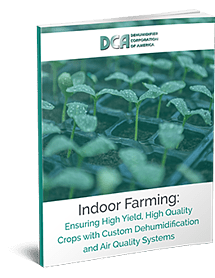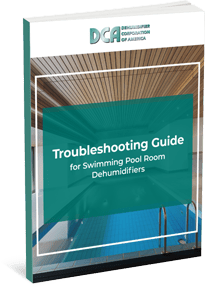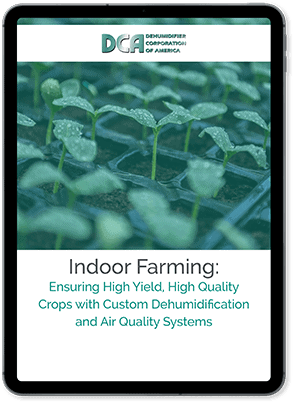Vertical farming is an agricultural method in which crops such as leafy greens and herbs are farmed indoors within climate-controlled environments. As the process becomes more efficient and economically viable, these urban farms are becoming more prevalent across the United States.
By controlling important environmental factors indoors, growers are able to cultivate better-quality crops at higher yields and in shorter periods of time. This also reduces the human footprint on the environment, as water and nutrients are conserved and less pollution and emissions are generated.
How Vertical Farming Reduces Costs
There are three main factors that make vertical farming a commercially viable option for large-scale American agriculture.
Creating Ideal Crops
Vertical farming eliminates the risk of bad weather and seed contamination by placing strict controls on temperature, light, humidity levels, carbon dioxide (CO2), and nutrients, allowing users to create ideal growing conditions for the highest-quality, best-tasting crops.
Under these near-perfect conditions, urban farms can yield higher crop volumes in reduced periods of time. In an interview with CNBC, AeroFarms CEO and Co-founder David Rosenberg said, “On average, we’re growing in 16 days what otherwise takes 30 days in a field.”
Reducing Crop Risk & Environmental Impact
While traditional farming has always been subject to poor weather conditions, crop diseases, and bad harvests, vertical or urban farming allows for year-round growth opportunity. When crops are grown in tightly controlled environments, diseases and seed contamination are less of a concern.
The pristine conditions and thorough processes of indoor grow operations also protect crops from exposure to harmful pesticides and fungicides while creating less pollution and emissions, unlike traditional farming methods and tractor use.
In addition to the rapid growing speeds AeroFarms has cultivated within a controlled environment, Rosenberg added that they are using “95 percent less water, about 50 percent less fertilizers, [and] zero pesticides, herbicides, [and] fungicides.”
Advances in Technology & Cost Trades
In order to ensure the highest yield and highest-quality crops, the structure of vertical farms is highly strategic. From LED lighting and stacked crop configuration to controlled water systems and use of coconut husk instead of soil, indoor operations leverage resources in the most efficient way possible.
Cost tradeoffs from indoor grow operations include reductions in the need for traditional large-scale farming equipment, maintenance and upkeep costs, and distance from farm to point of sale.
Because this process obviates the need for traditional equipment such as tractors, hefty overhead costs are reduced as well as inevitable maintenance and fuel expenses. LED lights used indoors, though costly upfront, require minimal maintenance and provide long-term value for vertical farming. Finally, shorter transportation distances save on time, shipping costs, and crop spoilage while providing customers the privilege of eating locally grown food.
Learn More about the Dehumidifier Corporation of America
 DCA is the leader in dehumidification systems for large-scale, commercial vertical and urban farm applications. Backed by over two decades of experience, we have the understanding and expertise required to ensure perfect growing conditions for your farm.
DCA is the leader in dehumidification systems for large-scale, commercial vertical and urban farm applications. Backed by over two decades of experience, we have the understanding and expertise required to ensure perfect growing conditions for your farm.
We even recently authored a free downloadable eBook, Indoor Farming: Ensuring High Yield, High Quality Crops. For more information about vertical farming and how our experienced team can help you get started, contact us today.
Topics: Indoor growhouse dehumidification, Urban farming, Vertical farming, Dehumidifiers





